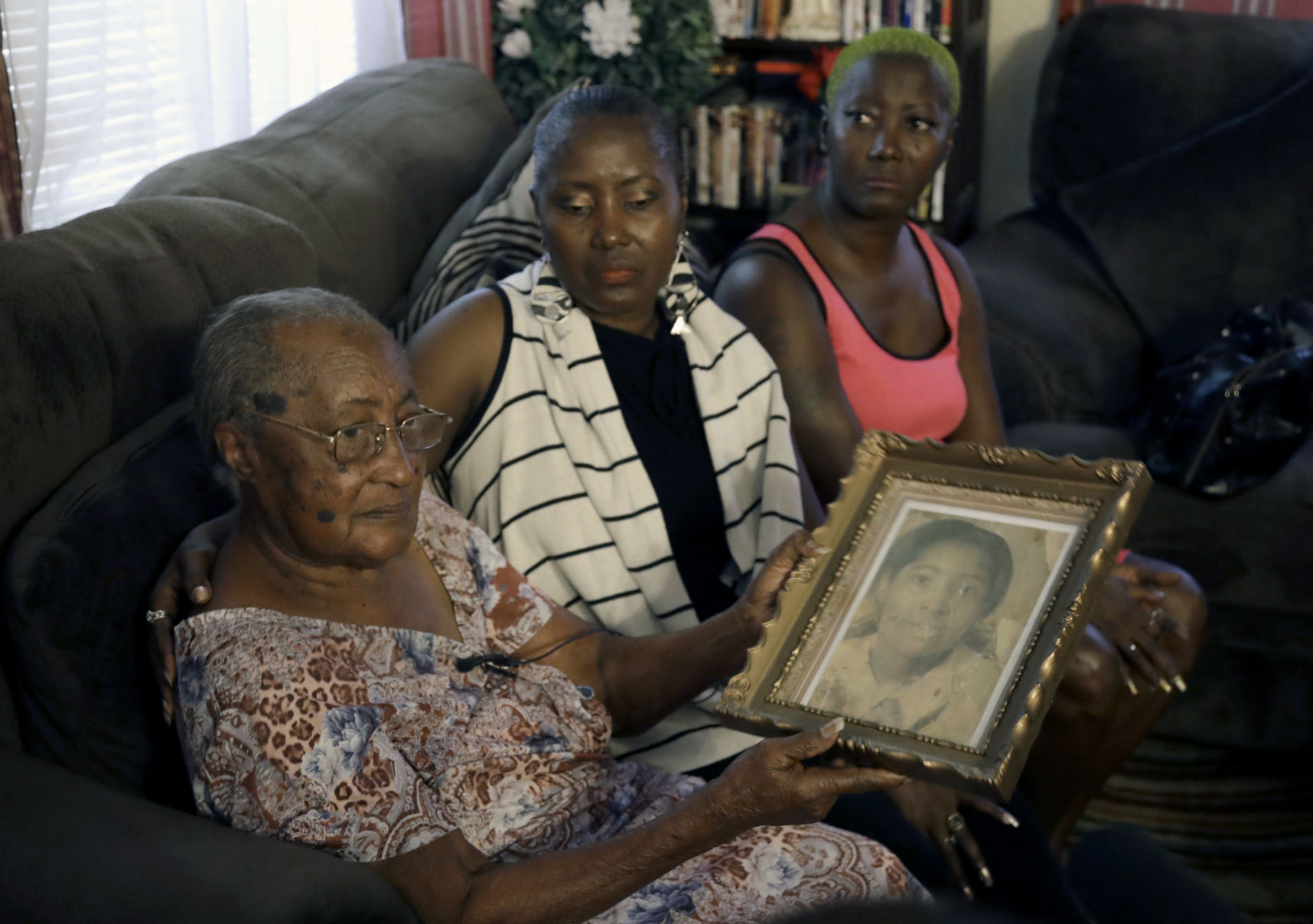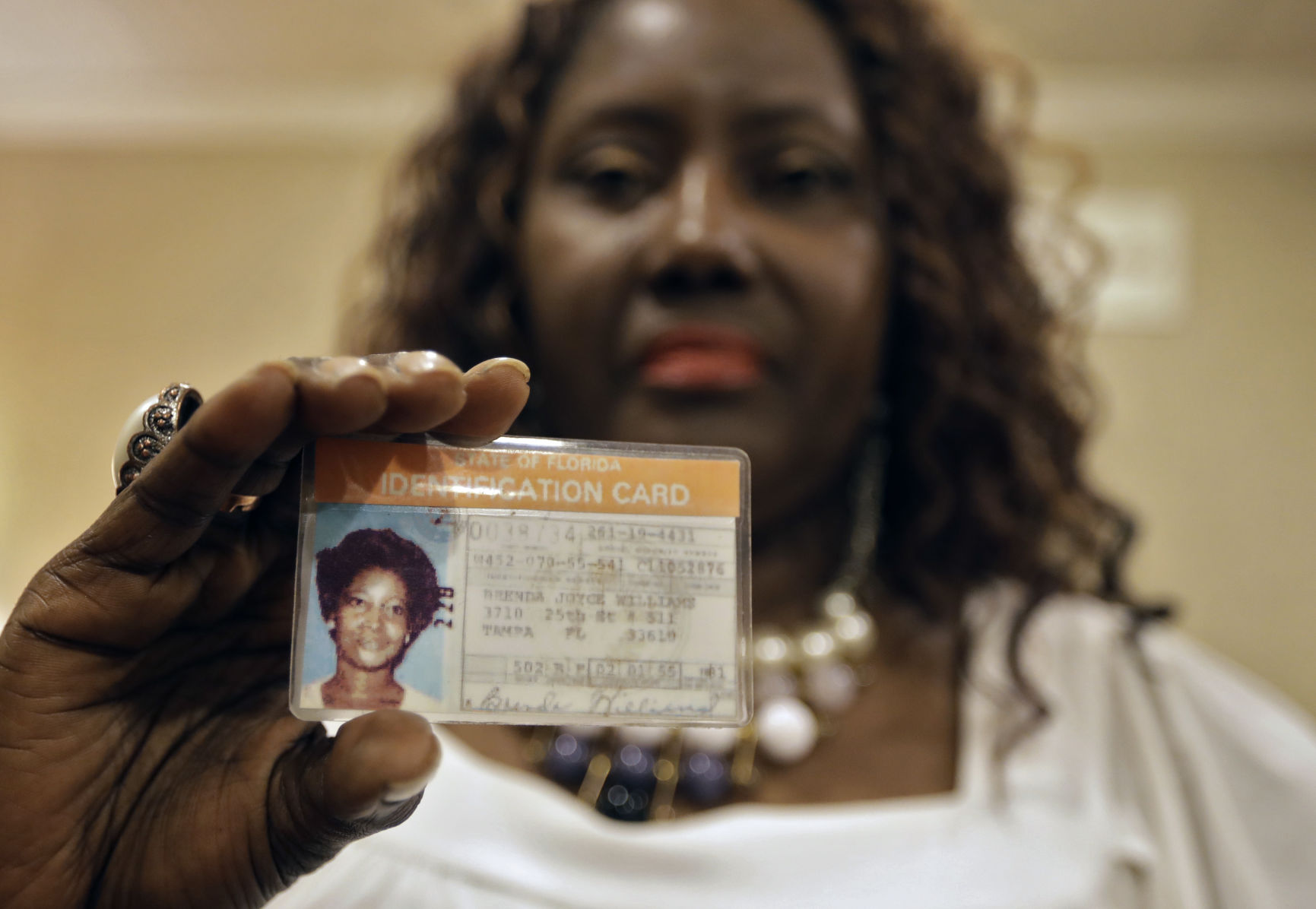40 years, 3 sisters, 1 DNA test: The story of a cold case
TAMPA, Fla. (AP) — For nearly half her life, Ruby Williams has prayed for her daughter, Brenda: “Lord, let her be alive.”
She’s repeated this prayer tens of thousands of times, starting in the mid-1970s, when she lived in a four-bedroom apartment with her husband and 12 children. Now 89 and a widow, she prays in a modest home near downtown Tampa, where she lives with two of her children.
Brenda, Williams’ third child, has been missing since 1978. Since then, her family has subsisted on slender threads of hope: Maybe Brenda just walked away. Maybe she was living a new life, with a different family. Maybe she’d had a mental break and ended up in some faraway city, confused and living on the streets.
Nearly 40 years later, on a blazingly hot Florida day in August, the Williams family was summoned to the Tampa Police Department.
“It must be news about Brenda,” Williams thought. But she did not accompany two of Brenda’s sisters to the police department. Instead, she stayed home in her darkened living room to pray once more: “Lord, let her be alive.”
Sheila Williams, who idolized her older, glamorous sister, and Sharon Scott, who has searched for leads on Brenda’s disappearance for decades, came to their mother’s home hours later to deliver the news.
Ruby Williams clasped her hands tight in her lap. Her children and grandchildren surrounded her. Most everyone sniffled and wiped away tears. They waited for Sharon and Sheila to begin speaking.
“Lord, let her be alive.”
———
The police had given up, if they’d ever even been interested in the case — at least that’s how it seemed to Sharon Scott.
But her sister prodded her: “Let’s go!”
Sheila Williams loves watching the news, and a local segment had caught her attention: Law enforcement and other officials would soon gather for a symposium on cold cases. Maybe, she thought, they’d be able to talk with detectives there about Brenda.
Scott wasn’t convinced, but her baby sister won out. They dug up a faded, photocopied picture of Brenda they hoped to show police.
Once there, however, it became clear the event wasn’t open to the public. They stood out — they were among the only black women there.
Sheila took deep breaths and ran her fingers over the photo. All around them were detectives, forensic scientists, state attorneys, lawyers — and lifelike sculpted busts of the missing and the dead, carved to draw attention to 19 cold cases .
As speeches about Florida’s backlog of 20,000-plus cold cases began, a bust caught Sheila’s eye: an African-American woman with a short afro and big, haunted eyes. It kind of looked like her — and like Brenda.
Sheila gasped and glanced at the photo in her hands. She elbowed her sister, then nudged a police officer next to her.
“Don’t they look the same?” She pointed at the photo, then the bust.
The officer shushed her.
Sheila couldn’t help herself. She walked to the clay sculpture. She held the photo next to the face. Sharon glanced from her sister, to the photo, to the bust and back again. Sheila began to sob.
A detective stepped forward and ushered the women into a room. He swabbed their cheeks for DNA. Perhaps, detectives said, there would be a match. The woman’s body had been found in a patch of scrub brush used as an unauthorized trash dump in 1985 just outside downtown Tampa. Detectives didn’t know her name.
Could it be Brenda?
———
Brenda grew up in the family’s crowded, chaotic apartment in a Tampa housing project and at 15, gave birth to a baby girl. That didn’t stop her from, as her sisters said, “being wild.”
She had minor brushes with the law and was incarcerated for a spell. When released, she got pregnant again, and at 22, had another girl. But to her family, she was getting her act together. She rented her own apartment a few streets away. Her mom proudly told neighbors that Brenda was finally going to church.
Sheila looked up to Brenda. Perhaps it had something to do with their birthdays — Brenda was born Feb. 1, 1955; Sheila, nine years and 364 days later. Or maybe it was how Brenda loved high heels, listened to The Isley Brothers and became the first Williams girl to drive.
By the time Sheila was 11, she was eager to spend the night at Brenda’s to get away from the chaos at home. But things weren’t always calm at Brenda’s, either. She dated a man who could be violent. When Sheila saw him beating her sister, she ran home to tell the rest of the family so they could defend her.
In April 1978, 22-year-old Brenda headed out for the night. Sheila cared for Brenda’s daughters, then 7 years and 9 months old.
“Don’t open this door for anyone,” Sheila remembers Brenda saying as she swept out of the house in her signature heels.
Brenda met up with Susanie “Cookie” Austin at a party. Austin remembers Brenda bursting in and asking if she wanted to go out on the town.
“I said no,” said Austin, now 61. “I never saw who she was with.”
Austin said she didn’t give much thought to Brenda’s question — the pair went drinking and dancing on occasion — until days later, when Brenda’s daughter knocked on the door.
“Have you seen my mama?” the girl asked.
A chill went through her. Brenda hadn’t come home? “It disturbed me so bad,” Austin said.
Everyone figured Brenda was just in trouble again, but within a day, the family started to worry. They checked everywhere. She wasn’t in jail and hadn’t been arrested. The family recalls calling police but says officers told them that because Brenda was an adult, there wasn’t much they could do unless relatives had evidence she’d been harmed.
Over the next few months, neighbors and friends stopped by the family’s apartment. They’d heard Brenda was in Bradenton. Someone claimed to have spotted her in Sarasota. Perhaps an ex-boyfriend had something to do with her disappearance.
Brenda had seemingly vanished into the humid Tampa air.
———
Over the years, Sharon had done her own detective work. She knocked on the door of a Fort Lauderdale woman who shares her sister’s name, combed through articles at the library, looked into a tip that Brenda was at a mental health hospital, called detectives every year. She even found a woman in Tampa using her sister’s name and Social Security number.
And yet, Sharon got nowhere.
That never surprised Sheila.
“My sister was black. My sister was in and out of jail. My sister took drugs. Now that I’ve grown up and I’ve lived life and I see how they treat skin color, and we were poor, it didn’t make a difference,” she said recently in her apartment in a different housing project, not far from where she and her siblings were raised. “Brenda was a nobody to them.”
She paused and looked down. “Skin color makes a big difference. I feel like when skin is as dark as ours, things don’t matter. If you’re poor, people don’t listen.” (Tampa police say they have no record of Brenda Williams reported as a missing person in the 1970s but that they would have handled it with care as in any other such case.)
Months after the sisters gave DNA samples, Sheila was still convinced that Brenda was the woman from the sculpted bust — a woman who, they would learn, had been buried in a pauper’s grave in a cemetery a stone’s throw away, the one shaded by moss-draped oaks where their father and grandmother are buried, the one filled with names familiar across the city’s black community.
Sharon still wasn’t so sure.
“Every time I go out of town, I’m looking,” she said. “I’m looking at faces. I’ll stare at somebody who resembles my sister. When I see homeless people, I’ll look, and think, ‘That could be my sister.'”
The first time detectives called the family, about a month after the Tampa event, Sheila learned her feeling had been wrong; it wasn’t Brenda. Police still couldn’t identify the woman from the pauper’s grave, but the DNA tests ruled Brenda out.
After all that — seeing the bust that looked so much like Brenda, giving DNA samples, rehashing the case to reporters — the family was no closer to the truth. Once again, they thought, officials had given up.
But months later, in August, detectives called again.
“We have some findings,” they said. Cryptic, the sisters thought, but they rushed to the police department. It clearly was important — the chief was there. So was the forensic scientist who had exhumed the body they initially thought was Brenda’s.
The detectives talked about the science behind DNA and cold cases while the sisters wondered: What’s taking so long? Why are we here?
Then, the news: The sisters’ DNA was a match with a jawbone found in a Tampa field by a schoolboy in 1986.
After 40 years, Brenda Williams had been found.
———
“Lord, let her be alive.”
The prayer Ruby Williams had relied on through the years still ran through her mind hours after the meeting, as children and grandchildren with long faces and wet tears filtered in and out of her home.
Brenda’s two daughters were there, now grown women, stunned.
It was a lot to take in, after decades of silence. Police said they don’t know how Brenda died. All they had is the jawbone, which they released to the family. Brenda’s loved ones used it to hold a proper funeral service Sept. 10, even as Hurricane Irma threatened the state.
Brenda had waited 40 years, and they wouldn’t let her wait any longer.
———
Follow Tamara Lush on Twitter at http://twitter.com/tamaralush .




